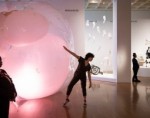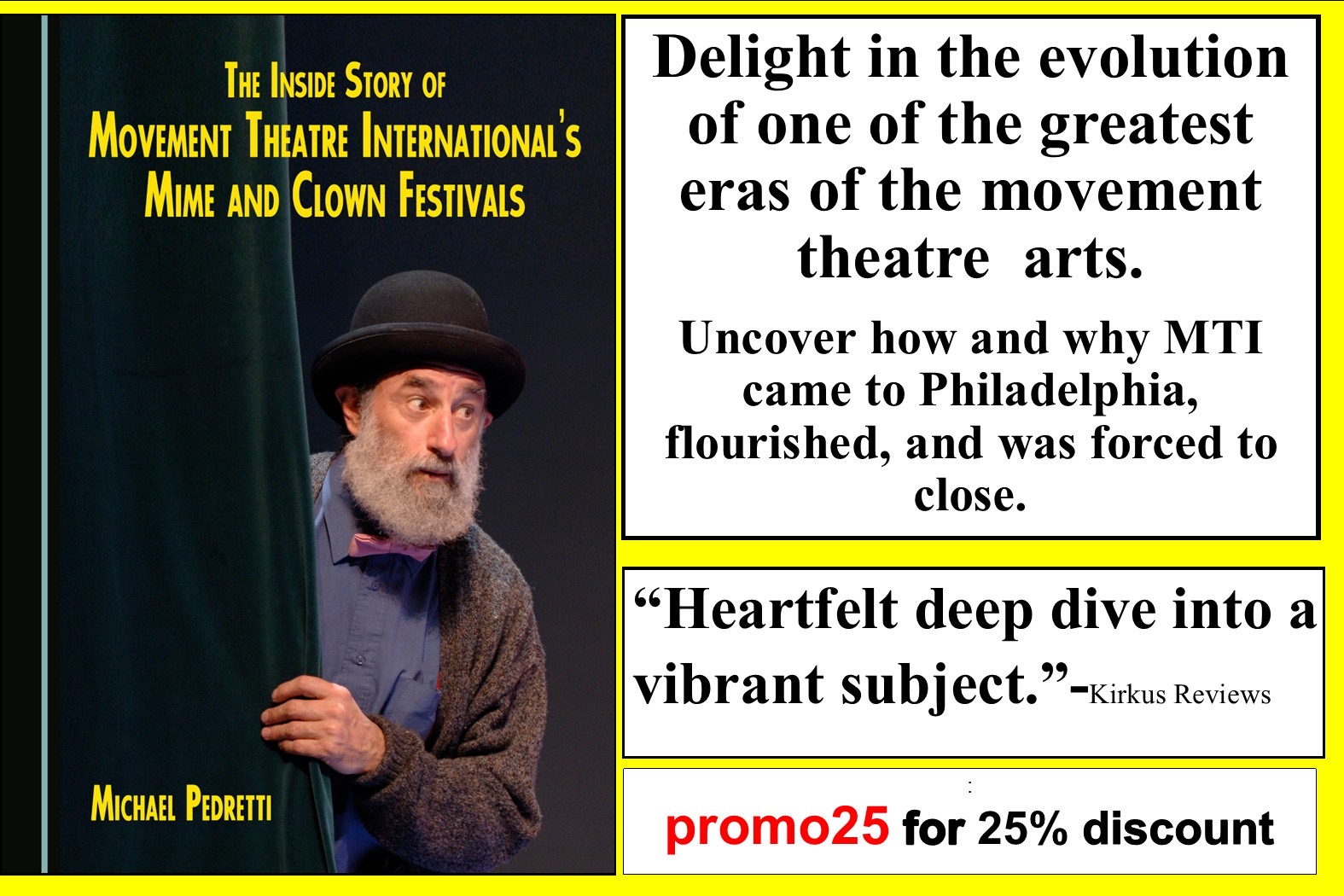
Meaningful Art Needs Time and Space
by Preeti Pathak
On a Saturday evening in February, Pennsylvania Ballet (PAB) was invited by Pennsylvania Academy of Fine Arts (PAFA) to share works inspired by Rina Banerjee’s Make Me a Summary of the World exhibition. Banerjee is a Bengali-Indian American visual artist who started her career in the early '90s and is best known for creating complex worlds through sculpture and installation. PAFA is exploring what it means to bring movement into their museum walls, and they are currently exhibiting Banerjee’s work and collaborating with organizations such as PAB to create art inspired by the exhibition. But as with all new ventures, there are lessons learned only through trial and error. I watched this conversation between dance and visual art with excitement and anticipation. I’m an Indian American dance writer and visual artist: the bar was naturally set high. Unfortunately, the production only skims the surface, not quite reaching the depths of the visual art it attempts to interpret. Despite this, I am left inspired by the implications of this conversation.
Depth is a central part of Rina Banerjee’s “Make Me a Summary of the World” exhibition. I make three separate trips to view her work, yet I’m still left with much to digest. Banerjee’s work is a rich tapestry of sculpture, installation, and painting, filled with commentary on the complexities of contemporary globalized culture. Her sculptures and installations are a concoction of textural objects she collects from the world over, ranging from shells and sand to alligator skulls. Banerjee distorts the stereotype of the feminine when she places pink feathers and flowers against chainmail and empty vials. Her female sculptures are rough and fierce, yet soft and inviting. Banerjee is also a painter, creating supernatural and fantastical beings with media including gouche, watercolor, acrylic, and more. Her various pieces are paired with long-winding titles and descriptions, and her work engages the viewer’s sight and emotions. Banerjee creates a rabbit hole for us to fall into, leaving us with more questions than answers.
Her swirling mix of cultural artifacts challenges us to probe their origins, their history, their story, often pointing to ecological impacts of globalism. Viola, from New Orleans-ah… contains a Yoruba African Mask, Kashmiri shawls, and Congolese elbow bangles. The sculpture titled Make me a summary of the world!... features Chinese umbrellas, sea sponges, and acrylic horns. Thus, several artifacts and painting techniques utilized by Banerjee are appropriated from different cultures. This seems to be done intentionally to complicate our understanding of appropriation as well as show the fragmentation of cultures and environments in the world around us today. In a like manner, Banerjee creates a new world that is simultaneously familiar and unknown. All this happens in direct conversation with PAFA's permanent collection—exquisitely reorganized by PAFA’s curator, Jodi Throckmorton—which is comprised of 18th- and 19th-century works from artists such as Winslow Homer, Robert Henri, and Mary Cassatt. This eurocentric art collection orbits around an Indian American point of view.
When I return to the Historic Landmark Building to see the performance, the Rotunda has been transformed. The audience surrounds a small stage in the center of the space. From our seats, we can see parts of Banerjee’s exhibition as well as a few paintings from PAFA’s permanent collection. The performance is comprised of four pieces, the first with fifteen PAB trainees, followed by solos by company dancers Alexandra Hughes and Ian Hussey, and finally a duet by Thays Golz and Zecheng Liang. The entire show passes by in a 20-minute whirlwind. The dancers are highly skilled, but from one piece to the next, I question how deeply they connect to Banerjee’s art. We see metaphors of entrapment as a lone trainee dancer in red leotard is stuck between two lines formed by a dozen shifting dancers clad in black. She searches for a crevice or opening to escape, but to no avail. Hughes transforms herself into a suspended marionette, twisting and turning as one hand hangs her form by holding an invisible string atop her head. Golz and Liang mirror each other’s movements, legs swooping as they twist, turn, then embrace. The metaphors are potent, but too flat in relation to the complexities of Rina Banerjee’s work.
Of the four pieces, Ian Hussey’s seems to be the most fully formed. Hussey enters the stage in a South Indian-style dusty orange vest embroidered in gold. Beethoven's Moonlight Sonata reverberates through the space. Hussey twists and contorts his body, bending at the torso as he stiffly moves his arms over his head and downward, parallel to the floor. It’s as if I can see the chains and shackles restraining his movements. He runs in circles around the stage, the pace of his movements rising and falling with the energy of the music. With his back to the audience, Hussey struggles to undo the buttons on the back of his vest. Finally free, he flings his vest off, revealing his naked upper body. Rigid movements are traded for smooth ones. Now his arms and torso sway as if weightless. He embodies the rough and smooth of Banerjee’s work. His struggle is as palpable as the struggle of women in Banerjee’s sculptures. His costuming speaks aesthetically to her work in a way other dancers’ outfitting misses. I am beginning to see the depths in Hussey’s piece.
After the performance, PAFA Director Brooke Anderson moderates a brief panel with the dancers and choreographer Jessica Kilpatrick. Kilpatrick choreographed the piece performed by the PAB trainees, while the other dancers choreographed their own pieces. I ask the panel how much time they put into viewing the exhibition as well as creating their performances. Each answer makes it clear that there was a shortage of time dedicated to immersing themselves in Banerjee’s art. These dancers convey the many responsibilities they balance amidst their full-time dance careers. Between school, work, and family, little time can be carved out for process. And this lack of time becomes apparent in the creation and execution of the works. The majority of the dancers visited the exhibition once and had only a few weeks to create their piece. This is no small feat, and I commend them all for their genuine efforts. But I wonder: if they were given the time and space for the creation process, what depths could their final works reach? The panel also reveals that some dancers assumed they weren’t allowed to exist in close proximity to Banerjee’s pieces. Again, time could have allowed them to gain clarity, which in turn could have created additional layers to their movement. What would it mean to see Golz and Liang dance in and around their inspiration, Take me, take me, take me...to the Palace of love? I can imagine seeing Hughes dance alongside suspended sculptures, herself a sculpture come-to-life. I would also like to see how a conversation between the dancers and Rina Banerjee could heighten these interpretations. This experience leaves the arts community with a lot to chew on. In our busy and underpaid lives as artists, how do we stretch ourselves and our work to create meaningful dialogue between different art mediums? And how can art institutions and funders offer more time and space for process in order to reach greater depths in these creative conversations?
PAFA Performances: A Night with the Ballet, PAFA, Historic Landmark Building, February 16.
By Preeti Pathak
March 22, 2019










